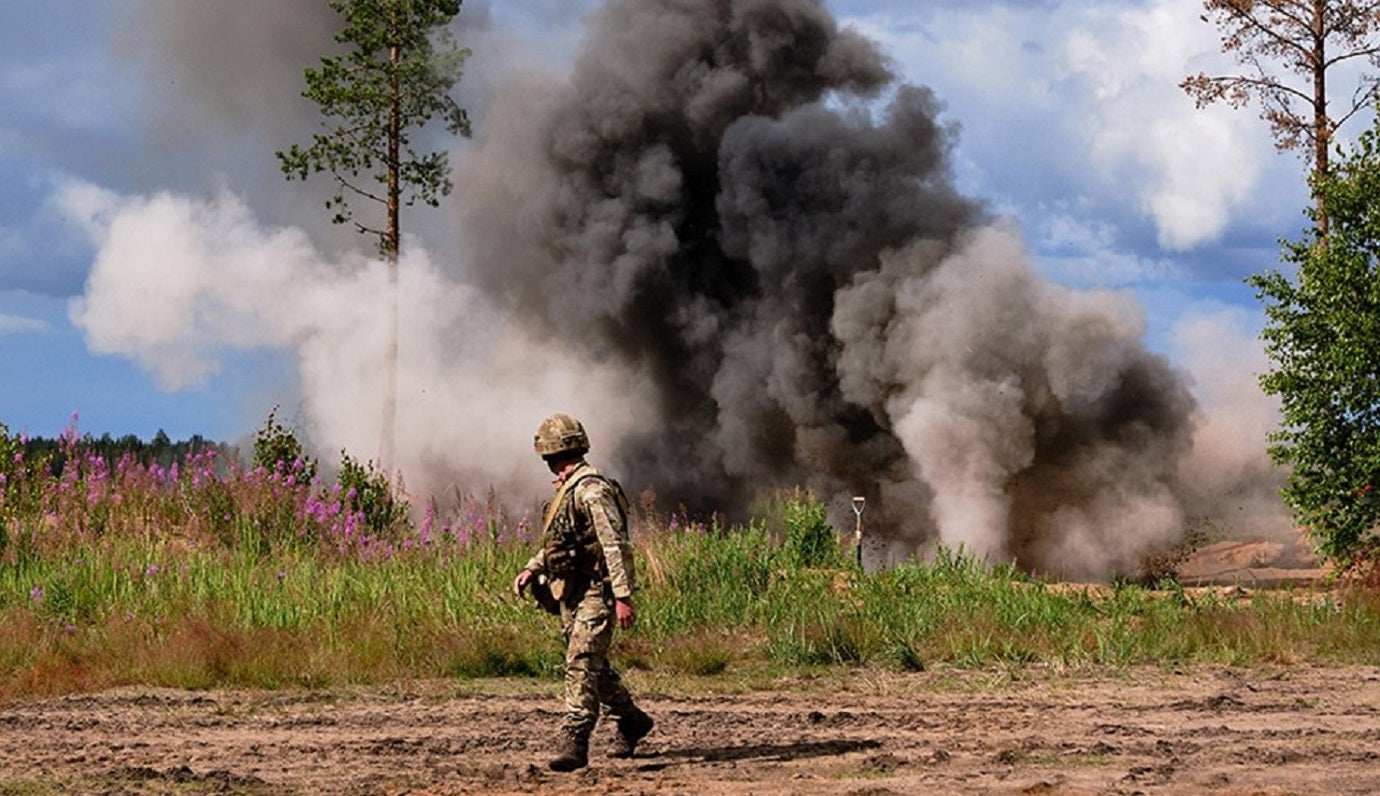
Engineers from the Defence Science and Technology Laboratory (Dstl), a specialist agency that supports the UK Ministry of Defence (MoD) with emergent military capabilities, are researching a new drone solution for mine clearance.
Dstl’s efforts recently contributed to the Nato STO Research Task Group SCI-321 to assess the potential, limitations and challenges of the use of unmanned aerial vehicles (UAVs) for the detection of targets in Military Search operations.
The Task Group aims to clear mined areas faster and more safely by mounting a UAV with a sensor payload to detect hidden explosive ordnance, a concept the MoD claims has the “potential to greatly increase protection for Armed Forces personnel on the battlefield”.
The Dstl team and its industry partners participated in two-week trials with Nato allies in Spain and at the Suffield Research Centre in Canada.
NATO SCI-321 held a previous trial in Spain in 2021, generating many useful observations. A second trial is being held in North America to get broader visibility on the sensors and systems being developed for these missions.
According to Dstl’s corporate report from November 2022, the UK Armed Forces are required to maintain freedom of access and manoeuvre (FOAM) in the electromagnetic environment.
Under the Ground Area Reconnaissance and Assurance (GARA) initiative, the UK military must ensure defined routes and areas can be cleared of emplaced explosive ordnance.
“Dstl research has supported GARA development by identifying and developing exploitable concepts to neutralise ‘tactically-emplaced explosive devices’ by electromagnetic means at sufficient distance from protected elements and restore freedom of action in defence and security operations,” the Dstl report states.
Advances in UAVs and low size, weight and power sensing have led to the development of innovative concepts for explosive threat detection by combining these technologies and systems.
“This is Dstl working with UK industry and international partners at its best,” stated Dstl’s chief executive, Dr Paul Hollinshead. “Highly innovative, developing new concepts, sharing expertise, and harnessing cutting-edge science and technology to save lives.”
Similarly, Dr Anthony Faust, head of the Threat Mitigation Group at the Department of Research and Development Canada and appointed Canadian representative to Nato SCI-321, commented: “[we] are continuously looking for new sensors and effectors, and ways of employing them, in order to improve Canadian Armed Forces’ capability through the exploitation of advanced technologies.
“This collaboration with Nato allies allows us to validate this technology collectively, promotes interoperability between Nato members.”
The problem of mine disposal in Ukraine
Active mines, munitions and other explosive ordnance are one of the most pervasive threats to the safety of civilians and military personnel alike.
The UN reports that one third of Ukrainian territory is littered with unexploded ordnance.
Last month, the UK MoD committed Royal Engineer sappers in the British Army to teach vital mine disposal skills to Ukrainian troops in Poland.
At the time, the MoD emphasised that it is “critical to the success of the ongoing counter-offensive that Ukraine has the resources to deal with mines”.
Invading Russian forces have demonstrated that their strategy targets both civilian and military personnel to make it more difficult for ordinary Ukrainians to sustain their resistance. This has led to an increased focus on critical national infrastructure in tandem with the winter weather approaching.
Mines are a critical part of this strategy as ordnance are used to disrupt everyday life as well as the Ukrainian military’s FOAM.
Bratislava-based global security think tank GlobalSec suggests that Russian troops are infamously creative in leaving mine-traps:
“[T]hey plant victim-activated devices on animals, dead-bodies, as well as double and even triple booby-traps on roads, fields and forests,” it notes. “It has been reported that the Russians have also deliberately targeted farming areas and agricultural land for contamination in order to deny its use for future economic activity in Ukraine.”







